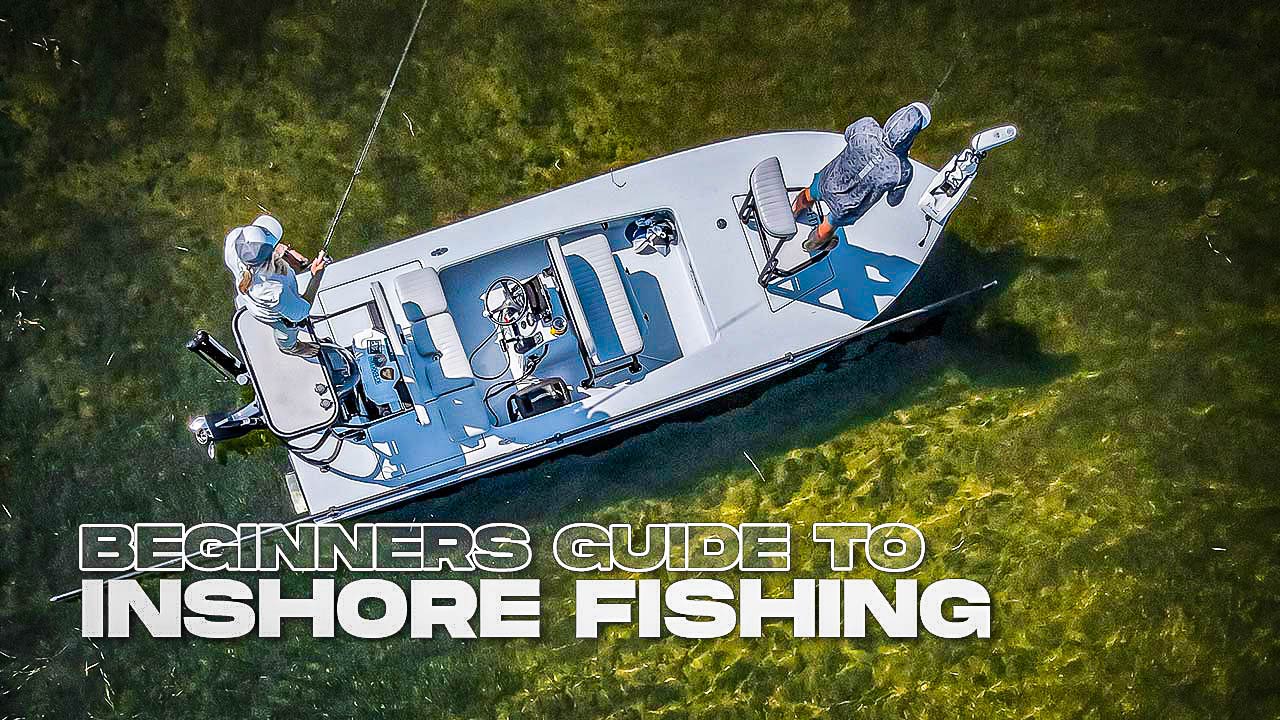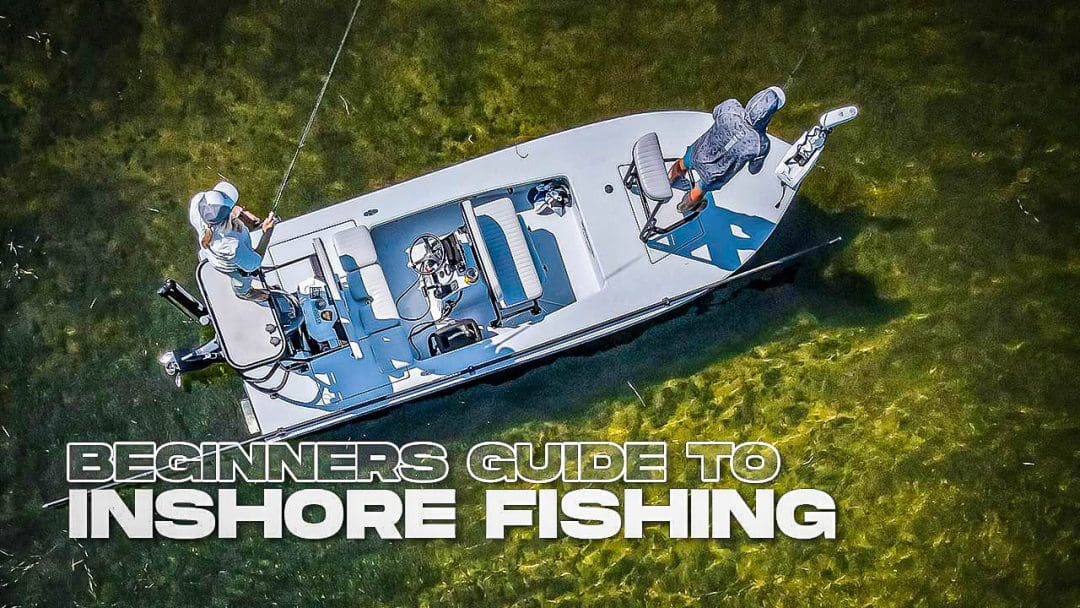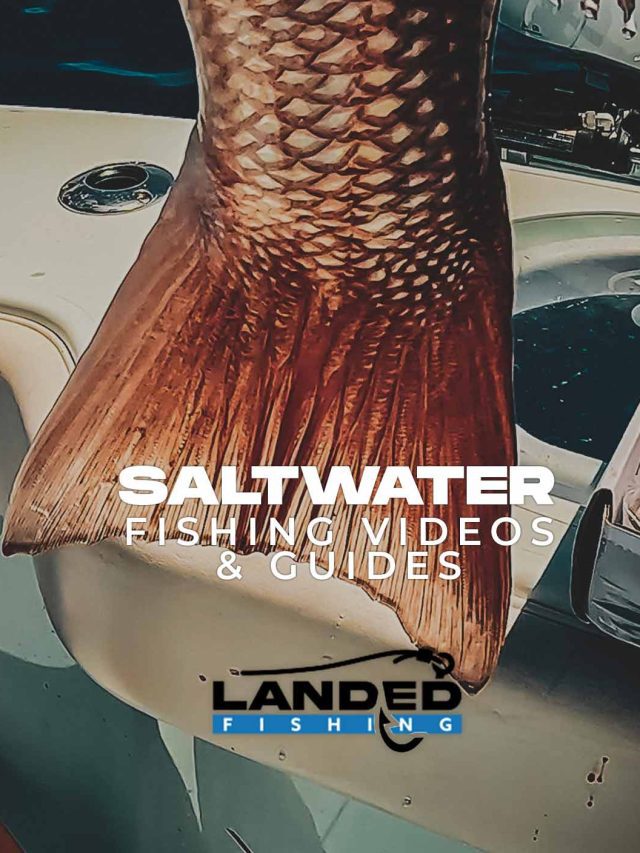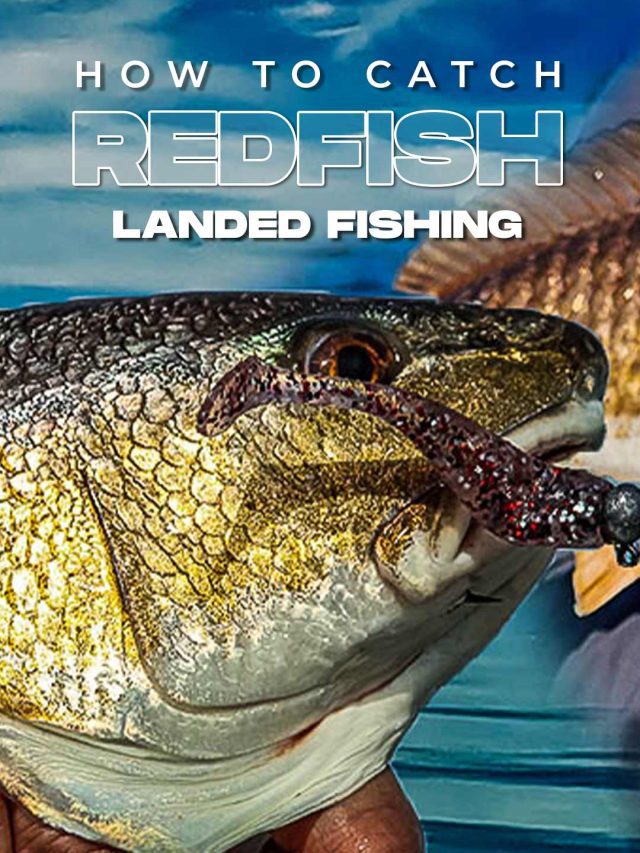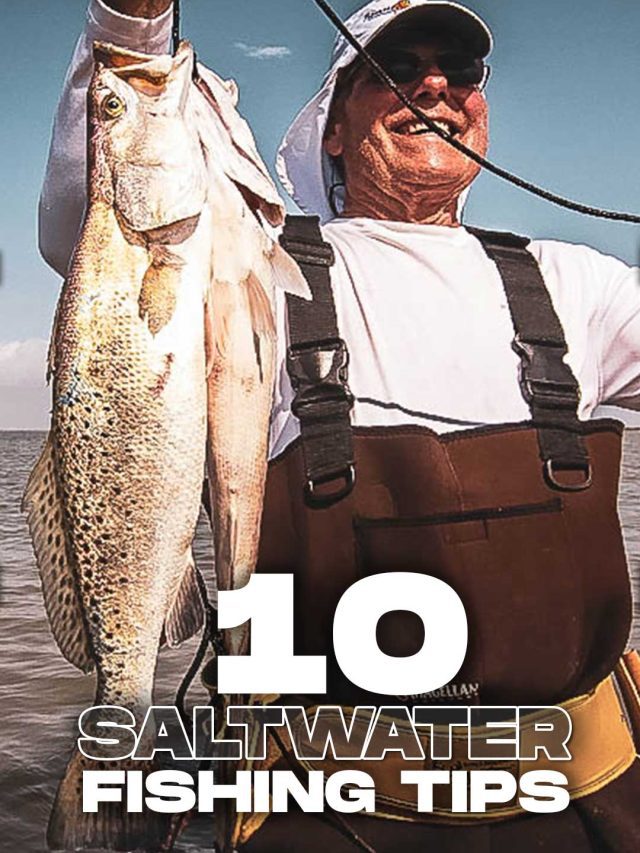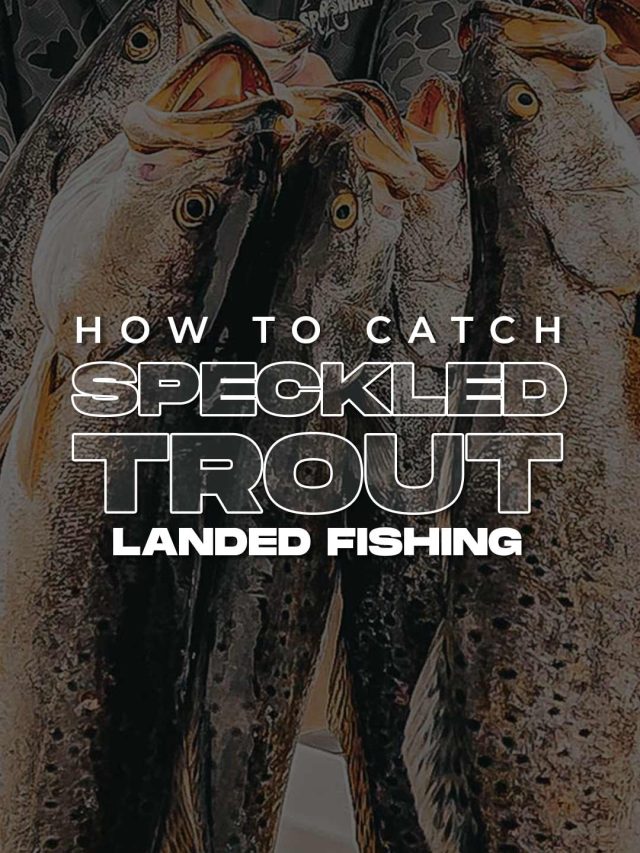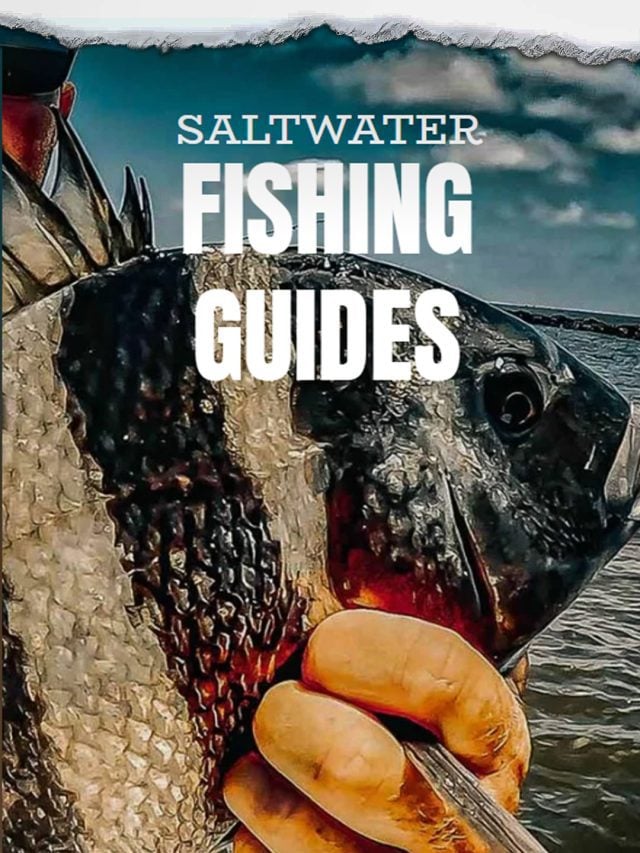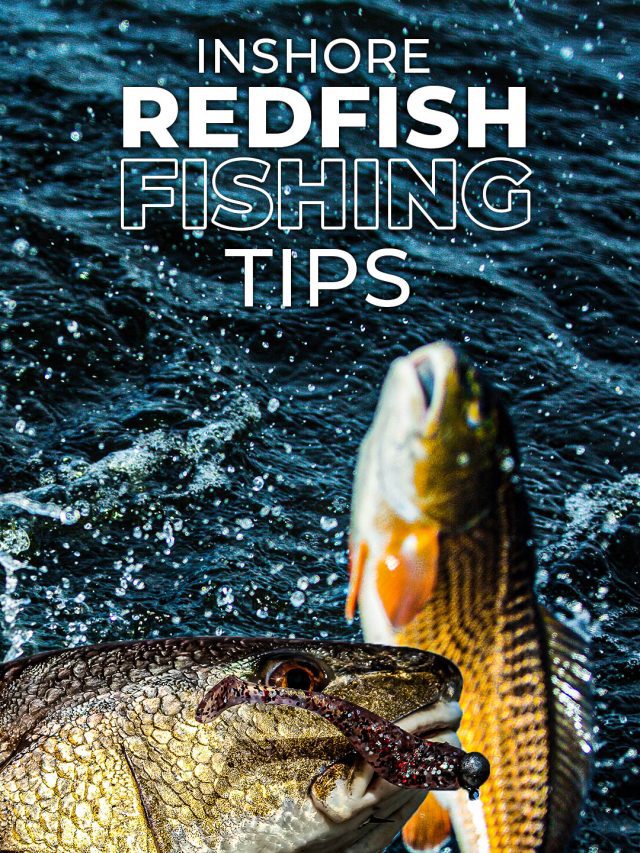Fishing the Gulf Coast, Grass Flats, Bays & Estuaries
For beginners, starting inshore saltwater fishing can feel overwhelming at first.
With so many different fish species and options for fishing gear and tackle, it can be challenging to know where to begin.
Saltwater Basics
Understanding the Basics: Gear and Tackle:
Before setting sail, it’s important to familiarize yourself with the basic gear and tackle needed for saltwater fishing. Heavy-duty rods, sturdy reels with strong drag systems, and corrosion-resistant fishing gear and terminal tackle are vital in the salty environment.
Casting Techniques:
Once you have your gear sorted, it’s time to perfect your casting techniques. Whether you’re casting from shore or a boat, practice accuracy and distance to reach the best fishing spots. Casting is a skill that improves with time and practice, so don’t be discouraged if it takes a few tries to get it right.
Bait and Lure Selection:
Choosing the right bait or lure is critical in attracting saltwater species. Live baits like shrimp, mullet, and squid are popular choices, but artificial lures can be equally effective.
Experiment with different colors, sizes, and movements to see what works best for the fish you’re targeting.
Understanding Tides and Currents:
Tides and currents play a significant role in saltwater fishing success. As the tide changes, fish may move to different areas to feed.
Pay attention to tidal charts and observe how fish behavior changes with the tides. Fishing during the incoming or outgoing tide can be especially productive.
Safety on the Water:
Safety should always be a top priority during your saltwater fishing expeditions. Wear a life jacket when on a boat, carry essential safety gear, and be aware of weather conditions before venturing out.
Let someone know your fishing plans and return time for added security.
Inshore vs. Offshore Fishing
Saltwater fishing offers the opportunity to target both inshore and offshore species. Inshore fishing involves exploring shallow waters for species like redfish, snook, and trout.
Offshore fishing takes you farther out to sea, where you can encounter powerful gamefish like marlin, tuna, and sailfish.
Choose your fishing location and techniques based on the species you’re interested in catching.
Common Saltwater Fish in the Gulf for Beginner Anglers
| Fish Species | Description |
|---|---|
| Redfish (Red Drum) | Bronze-colored with distinctive spot(s) on the tail base. Found inshore and nearshore. |
| Speckled Trout | Silver with speckles on the back. Inhabits estuaries, bays, and nearshore waters. |
| Flounder | Flatfish with both eyes on one side. Found in sandy or muddy bottoms. |
| Snook | Elongated body with distinct lateral line. Prefers mangroves, jetties, and grassy areas. |
| Spanish Mackerel | Sleek, fast fish with blue-green back and silver sides. Common nearshore and around structures. |
| King Mackerel | Larger mackerel with bluish-green back and silver sides. Known for strong fights. |
| Sheepshead | Vertical black stripes on silver body. Found near structures like piers and docks. |
| Black Drum | Black or gray with downturned mouth. Often found inshore around oyster beds and grassy areas. |
| Pompano | Silver fish with compressed body and forked tail. Popular around sandy shores and grassy flats. |
| Grouper | Varieties like Red and Gag grouper. Stout-bodied fish found around reefs, wrecks, and rocky structures. |
| Snapper | Varieties include Red, Mangrove, and Lane snapper. Inhabit reefs, rocks, and artificial structures. |
| Cobia | Dark lateral band on a broad body. Often found near buoys, wrecks, and floating objects. |
| Amberjack | Silver fish with elongated body and amber streaks. Found around wrecks, reefs, and oil platforms. |
The Basics: Inshore Fishing Gear
To get started saltwater fishing, you will need a few basic pieces of gear:
Fishing Rod and reel:
You will need a fishing rod and reel that is suitable for inshore fishing.
For redfish, sea trout, drum, and sheepshead, a medium-heavy spinning rod and reel setup is ideal.
You should also use braided line with a fluorocarbon leader.
Fishing Hooks:
You will need a variety of hooks in different sizes depending on the fish you are targeting.
Circle hooks are a great choice for inshore fishing because they tend to hook fish in the corner of the mouth, which makes for an easy release.
Fishing Bait:
Live bait is the best choice for inshore fishing. Some good options include shrimp, crabs, and small fish.
Fishing Lures:
Lures are another option for inshore fishing. Some good choices include soft plastic baits, topwater plugs, and spoons.
Fishing Tackle & Tools:
You will need a tackle box to keep all of your gear organized. Make sure to bring a few extra hooks and leader materials. Weights may also be needed depending on the style, bait and current conditions. Also a good pair of fishing pliers can make all the difference while out on the water.
Where to Find Inshore Saltwater Fish
Saltwater fishing can be done in a variety of locations, including bays, estuaries, and tidal creeks. Look for areas with structure, such as oyster beds, grassy flats, and drop-offs. These areas provide cover and food for the fish you are targeting.
Inshore Saltwater Fishing Tips & How-To’s
Top 10 Common Mistakes Anglers Make and How to Avoid Them
Whether you’re a novice fisherman just dipping your toe into saltwater fishing or a seasoned angler seeking to improve your catch rate, understanding common fishing mistakes is crucial to your success.
Often, anglers find themselves returning home empty-handed, not because the fish weren’t biting, but due to overlooked errors in their technique or approach. Let’s explore the top 10 common reasons anglers don’t catch more fish, offering clear, concise examples and invaluable tips to improve your fishing game.
Using the wrong bait can lead to a fruitless fishing trip.
Improper Bait/Lure Selection:
The type of bait or lure used plays a big role in attracting fish. Using the wrong bait can lead to a fruitless fishing trip.
Improve by researching the species of fish you’re aiming for and the type of food and habitat they prefer.
Positioning: Incorrect Casting Technique:
Many anglers cast their line too far or too close. Understanding where fish like to gather (such as around structures or in shaded areas) can increase your chances.
Practice your casting technique and aim for these likely spots.
Fishing at the Wrong Time:
Fish tend to be more active during certain periods of the day. For example, many fish are more likely to feed during the early morning and late evening.
Plan your fishing trip around these times to improve your chances.
Ignoring Weather Patterns:
Fish behaviors change based on the weather. Some species may be more active before a storm, while others may be more likely to bite on a sunny day.
Check the weather forecast before you head out and adjust your strategy accordingly.
Fishing in Overfished Areas:
Popular fishing spots can become overfished, making it harder to catch anything.
It may be worth exploring lesser-known areas to find more abundant fish populations.
Improper Handling of Equipment:
Misuse of fishing gear can lead to a lot of missed opportunities. For instance, not setting the hook properly can result in lost fish.
Take the time to learn and practice proper equipment handling.
Lack of Patience:
Fishing requires patience. Being hasty can scare away fish or lead to mistakes.
It’s important to relax, be patient, and sometimes, simply wait for the fish to bite.
Lack of Stealth:
Fish are sensitive to noise and vibration. Loud talking, heavy footsteps, and dropping equipment can scare them away.
When you’re near the water, try to be as quiet and unobtrusive as possible.
Inadequate Line Maintenance:
A worn or tangled fishing line can break or fail when you get a bite.
Regularly check and maintain your fishing line to ensure it’s in good condition.
Not Understanding Fish Behavior:
Different species of fish have different behaviors, habitats, and preferences. A lack of understanding of these factors can lead to unsuccessful fishing.
Spend time studying the fish you’re trying to catch to better understand their patterns and habits. This can greatly increase your chances of success.
Redfish (aka Red Drum)
Redfish are a popular inshore game fish that can be found in the Gulf of Mexico and along the Atlantic coast.
Here are a few tips for catching redfish:
Look for redfish in shallow water near structure.
Use live shrimp or crab as bait.
Fish during the outgoing tide when the water is moving.
Use a popping cork with a live bait or soft plastic lure to attract redfish.
Sea Trout (Spotted Sea Trout/ Speckled Trout)
Sea trout, also known as spotted seatrout, are another popular inshore game fish. They can be found in shallow water along the Gulf coast and Atlantic coast.
Here are a few tips for catching sea trout:
Look for sea trout in shallow water near grassy flats.
Use live shrimp or small fish as bait.
Fish during the incoming tide when the water is moving.
Use a popping cork with a live bait or soft plastic lure to attract sea trout.
Coastal Drum Fishing
Drum are a popular inshore game fish that can be found in the Gulf of Mexico and along the Atlantic coast.
Here are a few tips for catching drum:
Look for drum near structure, such as oyster beds and drop-offs.
Use live shrimp or crab as bait.
Fish during the outgoing tide when the water is moving.
Use a jig or soft plastic lure to catch drum.
Gulf Coast Sheepshead Fishing
Sheepshead are a popular inshore game fish that can be found in the Gulf of Mexico and along the Atlantic coast.
Here are a few tips for catching sheepshead:
Look for sheepshead near structure, such as docks and pilings.
Use live shrimp or fiddler crabs as bait.
Fish during the incoming tide when the water is moving.
Use a small hook and light line to catch
Important Safety Considerations
When fishing inshore, it’s important to take safety precautions to ensure a safe and enjoyable experience.
Here are a few safety tips:
Wear or have easily accessible life jackets available.
Be aware of weather conditions and avoid fishing in inclement weather.
Watch out for sharp objects, such as hooks and oyster shells.
Be mindful of your surroundings and watch out for other boats and people.

